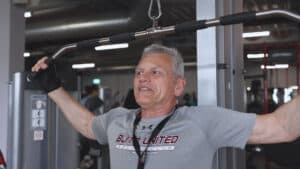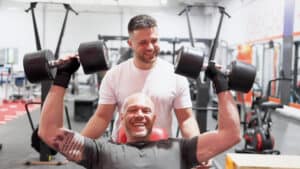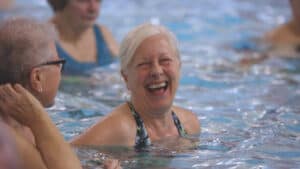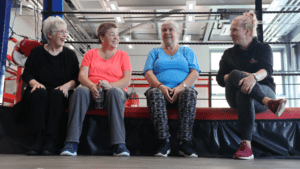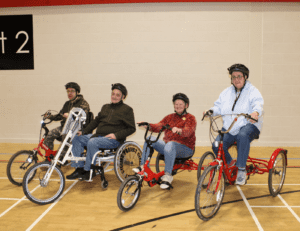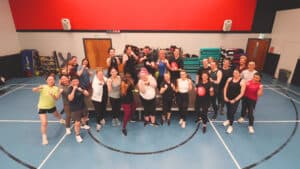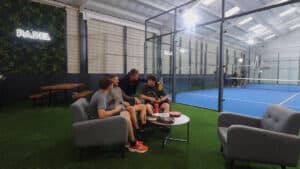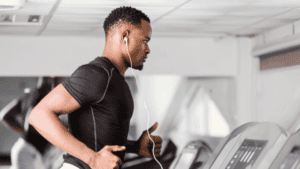With over 1 billion people globally living with obesity, according to the World Health Organization (WHO), addressing this complex health challenge has become more urgent than ever. Obesity is influenced by biological, psychological, environmental, and social factors, making it far more than a simple equation of diet and exercise.
The introduction of GLP-1 receptor agonists—medications that mimic a gut hormone to regulate appetite and blood sugar—has generated significant buzz as a promising tool in weight management. These medications, initially developed to treat type 2 diabetes, are now being used to support people living with obesity. But while GLP-1s can play a vital role, they are not a standalone solution. A holistic approach, combining medical support with lifestyle changes, is essential for long-term health and wellbeing.
At Life Leisure, we’re here to empower individuals to see movement as a cornerstone of health, complementing medical advancements like GLP-1s and providing benefits that extend beyond what medicine alone can achieve.
What are GLP-1 medications?
GLP-1 medications (commonly known under brand names such as Ozempic) work by mimicking the hormone glucagon-like peptide-1, which helps control hunger, blood sugar levels, and digestion. They’ve been a game-changer for many, offering support to those for whom traditional weight-loss methods haven’t worked.
However, these medications are just one piece of the puzzle. They address some of the biological drivers of obesity but don’t tackle the environmental, psychological, or social factors that also play a significant role. This is where movement, community, and holistic health support come in.
Why movement matters
While GLP-1s target the internal processes driving weight gain, movement offers unparalleled benefits that improve physical, mental, and emotional health. Here’s how movement works hand-in-hand with medical treatments to create a comprehensive approach to health:
- Energise: Boosting natural vitality and positive mood
One of the most immediate benefits of movement, even at a low intensity, is a surge in energy and mood. Any form of movement, whether that’s a brisk walk, swimming, or a gentle yoga session, trigger the release of natural “feel-good” chemicals, boosting your mood and vitality.
This isn’t just a temporary lift. Regular movement helps to maintain energy levels and counter the fatigue that can sometimes accompany certain medical conditions or treatments. Exercise offers an accessible way to boost physical and mental energy in a way that complements medical solutions.
- Connect: Building relationships through shared activities
Movement can strengthen both your body and your connections with others. Whether through a family swim, a group exercise class, or a group hike, engaging in exercise with others builds social support and a sense of belonging, which are essential for maintaining good mental health.
Unlike medication, which focuses solely on physical symptoms, movement enhances wellbeing in a holistic way. This social aspect is vital for those managing long-term health, providing both motivation and accountability. Movement becomes not just a personal choice, but an opportunity for shared health and experiences.
- Restore: Relaxing, recharging, and reducing stress
Movement is also incredibly restorative, offering stress relief and relaxation that support both body and mind. Low-intensity exercises like stretching, swimming, or Pilates encourage mindfulness, reduce tension, and promote relaxation. Exercise is a natural way to counteract the stresses of daily life.
For those using GLP-1s or similar medications, exercise can serve as a physical and mental support, providing a holistic way to recharge and balance the body. This stress-relief aspect of movement is unique, reminding us that even gentle, restorative exercises offer irreplaceable benefits.
- Strengthen: Physical resilience and injury prevention
Physical activity, particularly strength training, contributes to physical resilience and overall stability. Activities that build muscle and support joint health, such as resistance band exercises or core work, can reduce injury risk and make everyday activities easier and safer. By strengthening the muscles around your joints, you can reduce the risk of strains and other injuries, making tasks such as lifting shopping bags, carrying kids, or climbing stairs much simpler. Stronger muscles provide better support for your body, enhancing overall stability and coordination.
While GLP-1s can help manage weight, exercise strengthens the body’s core systems, reducing the likelihood of future health issues. This strength and resilience are key benefits that medications alone may not provide. Building strength, no matter the intensity, adds years of flexibility and stability, promoting a lasting, active lifestyle.
As the WHO notes, obesity is linked to numerous chronic diseases, including cardiovascular disease, diabetes, and certain cancers. Tackling obesity requires a comprehensive approach:
- GLP-1 medications help manage biological and hormonal factors.
- Movement improves metabolic health, cardiovascular function, and mental wellbeing.
- Nutrition and self-care lay the foundation for sustainable change.
Combining all elements and recognising that although each have their part to play, they’re much more effective when working together, is key to sustainably living well and seeing long-term positive health benefits.
Every day movement, for every body
One of the most common misconceptions is that physical activity is only for athletes or those at a certain fitness level. The truth is, movement benefits everyone—at every stage of life and ability. Whether it’s a gentle stretch, a fun dance class, or a strength session, movement enhances physical health, sharpens mental clarity, and boosts overall wellbeing.
Exercise supports metabolic health, strengthens the cardiovascular system, and encourages mental focus—complementing the effects of GLP-1 medications and other similar treatments, adding multiple layers of health benefits. Movement is more than just “fitness”; it’s a daily practice in self-care and resilience.
Get Started with some help
We know that taking that first step into the gym can feel intimidating, which is why we’ve created our Get Started programme— an accessible introduction to the gym for everyone. With guidance from fitness professionals, free personalised workout plans, and one-on-one support, this programme is designed to make movement approachable and enjoyable for all.
Our Get Started programme includes free, easy-to-follow workout plans that introduce you to different forms of exercise, provide access to experienced fitness coaches and a discounted introduction to personal training for those looking for a more tailored approach.
To find out more about our Get Started programme, please visit our website or chat to a member of the team at your local Life Leisure hub. https://www.lifeleisure.net/get-started/
A holistic path forward
We completely recognise that medication has its place and can be extremely helpful for certain health needs, but they are only one piece of the puzzle. By making movement a part of your life, you’re embracing a holistic approach that supports body, mind, and spirit.
GLP-1 medications are an exciting advancement in the fight against obesity and diabetes, but movement remains a cornerstone of health, offering benefits that extend beyond the scope of any medication. By embracing a holistic approach that includes movement, nutrition, and emotional wellbeing, we can address obesity and its related challenges in a way that is inclusive, empowering, and sustainable.
At Life Leisure, we’re here to support you in making movement your “medicine”—a pathway to greater health and vitality every day.















